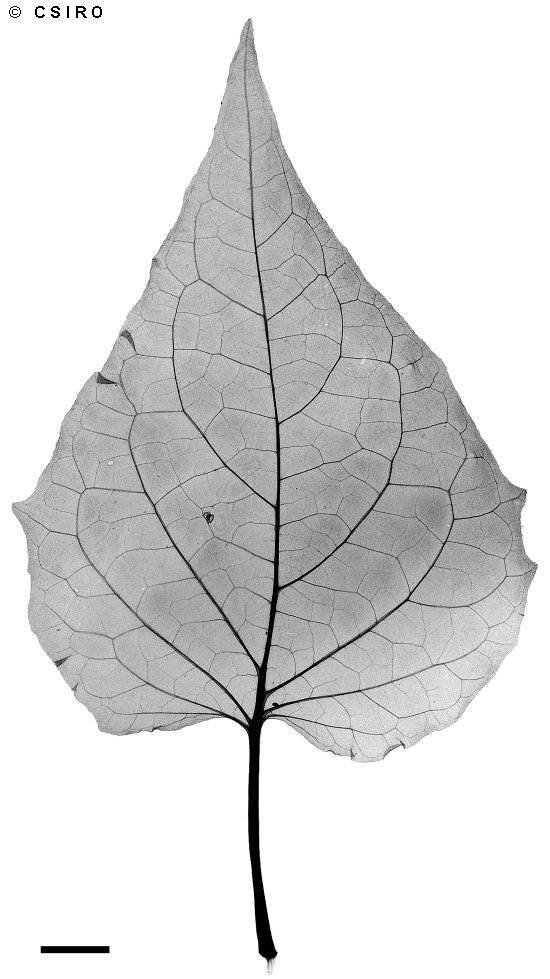Australian Tropical Rainforest Plants - Online edition
Physalis peruviana L.





Linnaeus, C. von (1763) Species Plantarum : 1670. Type: Lima, Peru; holo: LINN.
Cherry, Ground; Gooseberry, Cape; Ground Cherry; Cape Gooseberry
Usually grows as a weak-stemmed shrub about 1-2 m tall but sometimes flowers and fruits when smaller.
Leaf blades about 3-10 x 1.8-7.2 cm. Both the upper and lower surfaces of the leaf blade clothed in white hairs. Upper surface of the leaf blade arched between the lateral veins and the major secondary veins. Petiole with two longitudinal grooves on the upper surface. Twigs densely clothed in white hairs, longitudinally ribbed, pith white, usually becoming hollow. Leaves often arranged in pairs on the twigs but not opposite one another.
Fruits enclosed in the inflated, persistent calyx. Calyx about 27-40 mm long, shortly 5-lobed at the apex, outer surface clothed in short erect hairs. Berry globular, shiny, glabrous, about 10-20 mm diam. Seeds flat, about 1.7-2 mm diam. Embryo +/- coiled into a loose spiral with the cotyledons in the centre.
Cotyledons pubescent, about 7-13 x 5-8 mm, apex acute to apiculate. First pair of leaves clothed in septate hairs on both the upper and lower surfaces. At the tenth leaf stage: both the upper and lower surfaces of the leaf blade, stem and petiole densely clothed in white septate hairs. Leaf blade cordate. Seed germination time 12 to 35 days.
Occurs in NEQ, CEQ and southwards to Victoria. An introduced species brought to Australia from the Cape of Good Hope but probably introduced there from South America. Now naturalised in many localities in the higher rainfall parts of Australia. Altitudinal range in northern Australia from near sea level (?) to 900 m. Usually grows as a weed of agricultural land particularly newly felled and burnt rain forest on basaltic soils. Also found along roads and in disturbed areas of rain forest.
The fruit makes a very tasty jam. Frequently cultivated for its edible fruit. Purdie et al. (1982).





